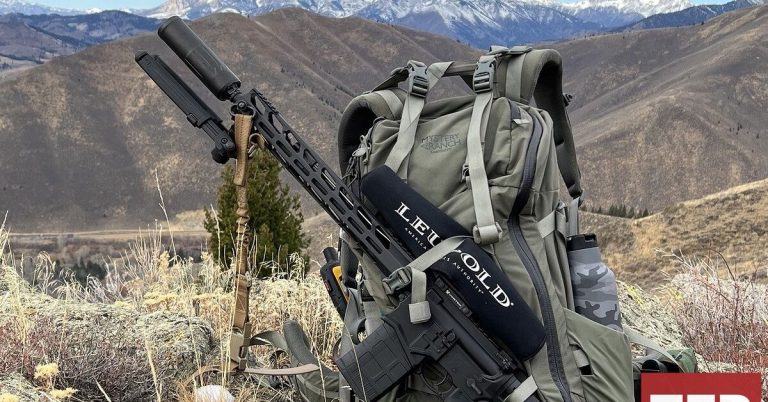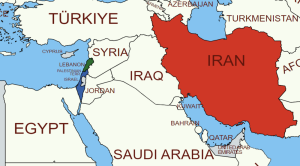Since the implementation of Extreme-Risk Protection Orders (ERPOs), or “red flag” laws, numerous studies and high-profile incidents have cast doubt on their effectiveness and raised concerns about potential abuses and deadly outcomes. While ERPOs are intended to prevent gun violence by temporarily removing firearms from individuals deemed a threat to themselves or others, evidence from recent studies and case examples demonstrates significant flaws in both effectiveness and due process.
FAIL: Extreme-Risk Protection Orders (ERPOs) Don’t Deliver

A comprehensive review by the RAND Corporation reveals that Extreme-Risk Protection Orders have had inconclusive results on various public safety outcomes, including violent crime, suicides, and unintentional injuries. While proponents argue that ERPOs could reduce gun violence by preemptively disarming high-risk individuals, RAND’s findings indicate that this objective remains largely unproven.
According to RAND’s 2024 update, only five studies met their inclusion criteria to assess ERPOs’ impact on suicide rates, and of those, only one showed any potential reduction, estimating a mere 4% to 6% decrease in suicides. Yet even this study faced criticism for significant methodological weaknesses, including its limited geographic focus and reliance on assumptions rather than direct causative evidence (Dalafave, 2021).
The RAND analysis highlights the disparity in outcomes across states implementing ERPOs. For instance, in states like Connecticut and Indiana, initial findings suggested minor reductions in firearm suicides, but when RAND revisited these findings, they found that results varied widely by location and that some states, like Connecticut, experienced inconclusive or even negligible impacts despite widespread ERPO implementation. The observed declines were not statistically significant in most cases, raising questions about ERPOs’ broader effectiveness. (RAND, 2024).
On other outcomes, such as violent crime and mass shootings, RAND’s report describes the evidence as “inconclusive or mixed,” with studies unable to demonstrate any consistent decrease in homicides or firearm-related assaults post-ERPO adoption. One study, analyzing data from Indiana and California, found no clear link between ERPO laws and declines in violent crime. In fact, the study cited “serious methodological concerns,” with one study noting that the “Extreme-risk protection orders have uncertain effects on total and firearm homicides. Evidence for this relationship is inconclusive”,” pointing to factors such as limited enforcement periods and variable criteria for ERPO petitions as possible explanations.
Similarly, RAND’s findings on unintentional firearm injuries reveal significant limitations, with only one study meeting their standards to evaluate this outcome. The study’s authors observed “uncertain associations” between ERPOs and unintentional firearm deaths, emphasizing that “available data do not allow for clear conclusions on ERPOs’ preventative capacity in this area” (RAND, 2024). In other words, although ERPOs are positioned as a preventative measure, evidence supporting their practical impact on enhancing public safety remains insufficient.
With these findings, RAND emphasizes that ERPOs, as currently implemented, “leave major gaps in their purported safety benefits,” potentially posing more questions than answers. These mixed results indicate the need for a critical examination of ERPO policies and underscore concerns raised by civil rights advocates about the laws’ effectiveness and constitutionality.
Citations:
- RAND Corporation, “The Effects of Extreme-Risk Protection Orders,” July 16, 2024.
- Dalafave, R. “An Empirical Assessment of Homicide and Suicide Outcomes with Red Flag Laws,” Loyola University Chicago Law Journal, 2021.
- Pear, V. et al., “Firearm Violence Following the Implementation of California’s Gun Violence Restraining Order Law,” JAMA Network Open, 2022.
FACT: ERPO Have Deadly Outcomes
In Maryland, however, tragic results from an ERPO enforcement in 2018 stand as a stark warning of the real-life dangers posed by red flag laws. Early one morning, Maryland police attempted to enforce a red flag order by removing a resident’s firearms without prior notice. A struggle ensued, leading to the homeowner’s death. This incident underscores concerns raised by Second Amendment advocates who argue that ERPOs can turn deadly when gun owners, often unaware of the order, are faced with unexpected armed confrontations on their own property.
FACT: ERPO Hurt Due Process
The lack of due process in these laws is also under scrutiny. In 2023, a New York court ruled that red flag orders must require supporting documentation from a medical professional, highlighting due process violations in previous ERPOs. Without such standards, red flag orders may be issued based on claims from family or friends without a medical basis, stripping gun owners of their rights without adequate justification. Judge Craig Steven Brown, citing the Constitution, stated that “Second Amendment rights are no less fundamental than… Fourth Amendment rights,” emphasizing the need for robust due process before depriving someone of these liberties.
FACT: Extreme-Risk Protection Orders Are Abused
Critics also note the ERPO system’s vulnerability to misuse, including situations where orders are reportedly used to harass former partners or as leverage in family disputes. For gun owners, fighting an ERPO can be costly, particularly for those with limited resources, effectively making it more difficult for lower-income individuals to reclaim their rights.
Just Say NO!
Organizations such as Gun Owners of America and the Firearms Policy Coalition have taken strong stances against red flag laws, arguing that no amount of due process can reconcile these laws with Constitutional rights. Meanwhile, the National Shooting Sports Foundation (NSSF) states they could support red flag laws if due process is guaranteed. However, NSSF has emphasized that ex parte orders—those issued without notifying the gun owner beforehand—pose an unacceptable risk of abuse.
The mixed results from ERPOs on safety outcomes and the potential for rights abuses are significant. As more states consider ERPO laws, policymakers must grapple with the evidence and listen to communities concerned about both safety and constitutional rights.
The question remains whether the risks ERPOs present to individual liberties and potential misuse outweigh their uncertain benefits for public safety.
Read Related:



















